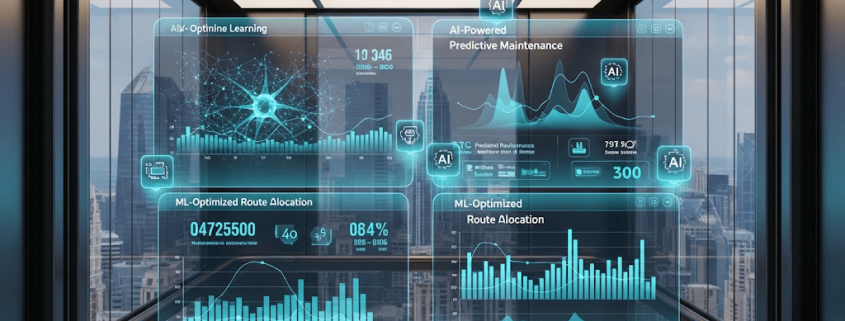Artificial Intelligence and Machine Learning in Smart Elevators: From Predictive Maintenance to Performance Optimization
The Importance of the Topic
Artificial Intelligence (AI) and Machine Learning (ML) are revolutionizing the elevator industry. By analyzing data from sensors and control systems, these technologies enable predictive maintenance, reduce downtime, and optimize elevator performance. This article examines the role of AI and ML in smart elevators and evaluates their benefits for safety, efficiency, and preventive maintenance.
Defining AI in the Elevator Industry
Elevators are among the most critical components of urban and building infrastructure. Sudden failures or suboptimal performance not only disrupt mobility but may also pose serious safety risks. Traditional elevator maintenance methods typically rely on periodic inspections or reactive repairs, which are costly and inefficient.
AI and ML leverage real-time data and predictive algorithms to enable predictive maintenance. These technologies can:
-
Predict potential failures before they occur.
-
Reduce energy consumption by optimizing system efficiency and elevator movement.
-
Enhance passenger safety through rapid detection of technical faults.
AI and ML: Definitions and Applications in Elevators
1. What Are AI and Machine Learning?
-
Artificial Intelligence (AI): A branch of computer science that enables systems to perform tasks typically requiring human intelligence (e.g., pattern recognition, decision-making, and prediction).
-
Machine Learning (ML): A subset of AI where systems learn from historical data to identify patterns and make predictions without explicit programming.
2. How Are AI and ML Used in Elevators?
Smart elevators use IoT sensors to collect real-time data, including:
-
Motor vibration
-
Motor temperature
-
Energy consumption
-
Safety system status
ML algorithms analyze this data to detect failure patterns.
Key Applications
1. Predictive Maintenance
ML systems can detect early signs of component wear (e.g., motor pulleys) and issue warnings.
Example: If an algorithm detects gradually increasing motor vibrations, it predicts an imminent failure.
2. Performance Optimization
AI analyzes elevator usage patterns to manage inter-floor traffic during peak hours.
Example: In office buildings, the system prioritizes ground-floor service at 8 AM when most employees arrive.
3. Energy Efficiency
AI-driven energy optimization algorithms reduce the number of active elevators during low-traffic periods and minimize unnecessary stops during peak hours.
4. Safety Enhancement
AI detects potential failures (e.g., broken cables or safety brake malfunctions) faster than human operators.
Example: If sensors indicate a floor door isn’t closing properly, the system automatically alerts technicians for repair.
Case Studies: Leading Companies Using AI in Elevators
-
Otis – Otis ONE Service
-
Uses AI and IoT to monitor 2+ million elevators globally.
-
ML algorithms predict failures by analyzing sensor data.
-
-
KONE – 24/7 Connected Services
-
Leverages ML to study elevator usage patterns and perform preventive maintenance.
-
Conclusion
AI and ML have transformed the elevator industry. With capabilities like failure prediction, performance optimization, and safety enhancement, these technologies reduce maintenance costs while improving user experience.
In the future, elevators are expected to become fully autonomous, using advanced AI to:
-
Select optimal routes.
-
Minimize energy consumption.
-
Operate with fewer stops.
References
-
Otis Worldwide Corporation. (2023). Otis ONE: AI-Powered Elevator Monitoring.
-
KONE. (2023). *KONE 24/7 Connected Services with Machine Learning.*
-
McKinsey & Company. (2022). The Future of Smart Elevators and AI.




Leave a Reply
Want to join the discussion?Feel free to contribute!